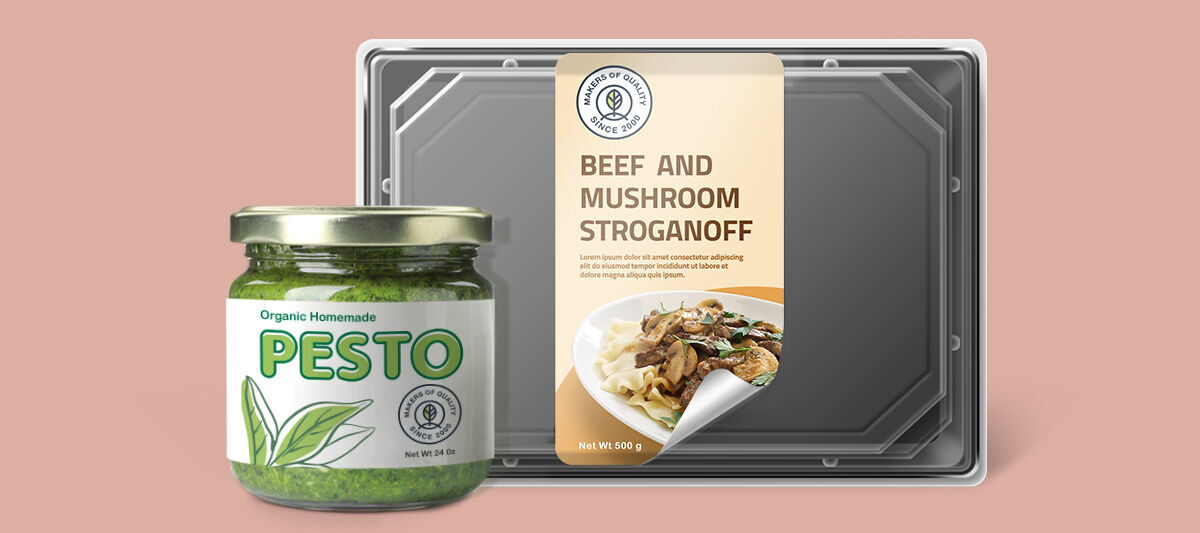Food Packaging Guidelines
Written By: Leslie Taylor | Article Date: January 26, 2021

Each country has its own regulatory body tasked to oversee food safety. These government agencies are responsible for ensuring the welfare of their citizens by scientifically determining what’s safe to consume, what’s not, and taking care that consumers are informed with the right information. For America, this task falls on the shoulders of the U.S. Food & Drug Administration (FDA), who according to their mission, “is responsible for protecting the public health by ensuring the safety, efficacy, and security of human and veterinary drugs, biological products, and medical devices; and by ensuring the safety of our nation's food supply, cosmetics, and products that emit radiation.”
Included in the scope of their responsibilities is food packaging. They basically look out for two things: is the packaging food-safe, and if the information provided is truthful and correct. This is important because not all packaging is made the same. A plain paper bag for example, is an inadequate packaging solution to transport raw meat. Likewise, you need the assurance that the nutritional information on a food label is correct for you to make an informed decision.
Seal Your Success With Food-Safe Custom Pouches
One of the most important factors to consider with food packaging is food safety. Whether you’re a newcomer or have been operating for decades, utilizing food-safe packaging materials is the best way to build a solid reputation for your brand. Especially with products that are directly in contact with the packaging material, food-grade substrates that are non-toxic and won’t have an adverse chemical reaction. This can be as simple as sealing coffee beans and trail mix for freshness, or something a little more complicated like sauces, smoked meats, or beauty creams.

NextDayFlyers’ offers custom pouches that have food-grade barrier film inside the bag, while the exterior can still be printed in full color. This lets you give your customers the assurance of food safety while at the same time, keeping your branding game on point. You can also print FDA required nutritional information at the back, or stick a food label on it instead.
New Nutrition Facts Label Guidelines
The FDA published new guidelines for nutrition labels on packaged food and drink that businesses must act in accordance with. This is the first major label change mandated by the FDA in more than 20 years, making it the most opportune time to refresh your packaging design. They are requiring manufacturers with $10 million or more in annual sales to switch to the new label by January 1, 2020, while manufacturers with less than $10 million in annual food sales have until January 1, 2021 to comply.
The important ingredients to include in your nutrition label are:
- Servings per Container
- Serving Size
- Calories
- % Daily Value
- Nutrients
- Allergy Information, if any
The new guidelines act as an effort to spread information awareness on nutrition science. Consumer behavior and innovations in nutrition after all, has changed drastically since 1993, the last update. The label essentially should look the same since it’s iconic at this point, but the new changes give more emphasis on calories, serving sizes, and servings per container to aid consumers in making a more conscious decision on what and how they consume. NextDayFlyers’ quick printing turnaround time lets you quickly change your products’ food labels and custom pouches to comply with the FDA mandate.
Food Contact and Custom Boxes

For custom packaging, the big question with food and drug safety is the direct contact between packaging and the products. Especially with printed custom boxes, one has to wonder if the packaging material contains harmful chemicals that would rub off on the products inside. The FDA actually has regulations on what substances are permissible to come into contact with food. In Title 21, Chapter 1, Subchapter B, Part 176 of the Code of Federal Regulations, the FDA outlines the different chemicals and components of paper and paperboard that are safe to come in contact with dry food.
In general, as long as your dry goods are not corrosive or extremely acidic, using custom printed boxes are perfectly safe. You can also use a poly bag inside the box to act as the primary packaging so that there’s indirect contact with the box.
Frequently Asked Questions
Are your product packaging food-safe?
Yes. Our custom pouches are made with high-barrier material with an oxygen transfer rate (OTR) of .06 to .065, which provides oxygen and moisture protection. For food labels, our BOPP material is non-toxic and can be exposed to water, oil, and moisture.
Will printed packaging compromise food safety?
No, it won’t if you follow the guidelines set forth by the FDA. As long as your food packaging is used as intended and the products are well within the prescribed parameters, there should be no problem.
Can I order a sample?
Yes, you can order a sample box or pouch. Simply choose ‘1’ in the quantity dropdown menu to have a sample made. Once you’ve received and inspected it, you can proceed with a larger order using the same design. For food labels, we don’t offer samples but you can print 25 pieces to start with.
How fast is printing turnaround time?
For food labels, next day printing is available. Custom boxes and custom pouches on the other hand, take a little longer to produce. Custom boxes take 10-15 business days for production but can be expedited to 6-8 business days. For custom pouches, the turnaround time is 10 business days.
Can I check my design before production starts?
Yes, we can send you an online proof that you need to approve before printing. Once you us your approval, we can start with production.

